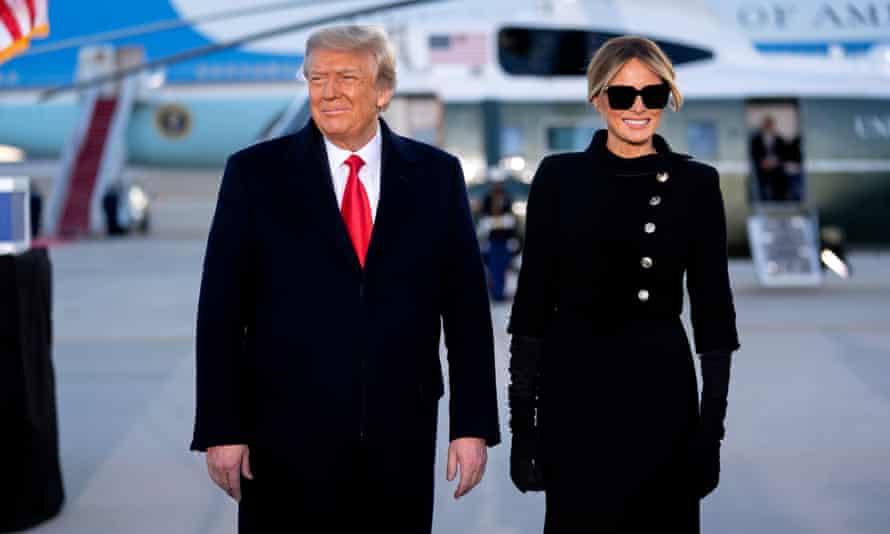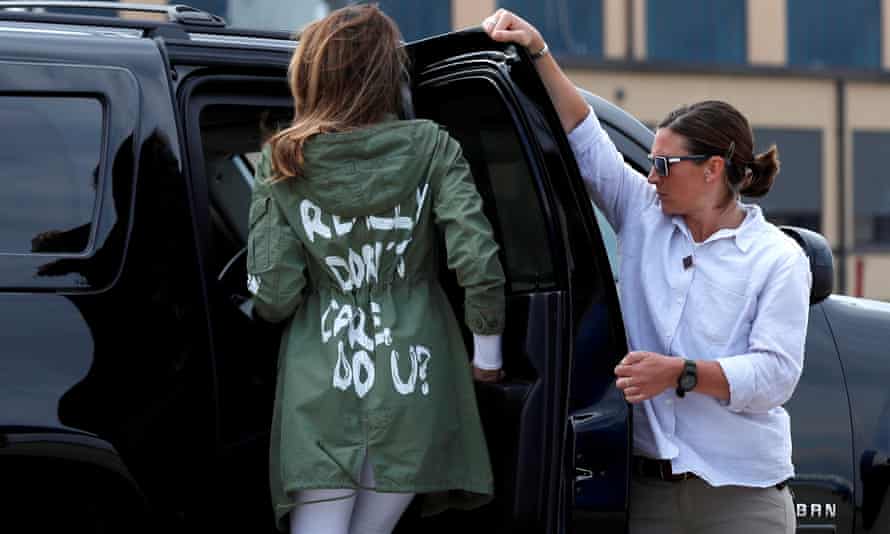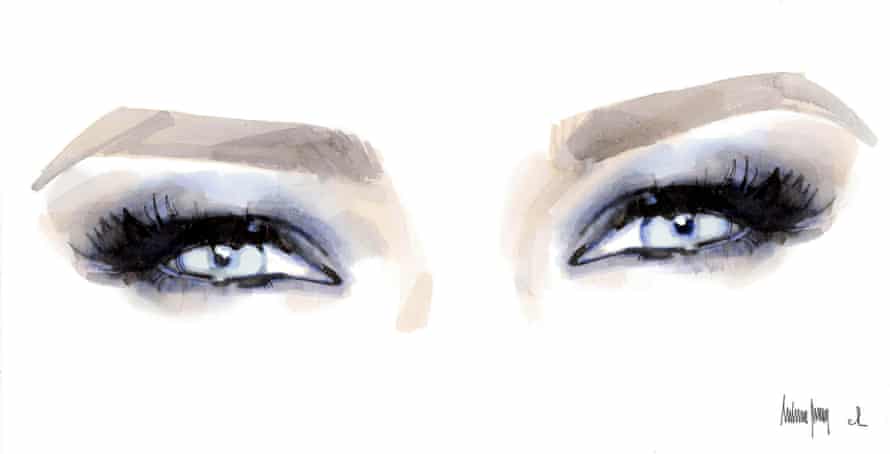Shared from www.theguardian.com
“These prosecutors are rummaging in my closets, hoping to find skeletons. But all they will find are my beautiful clothes.” So says the fictional Marija Popa, adapting an infamous phrase from Imelda Marcos, the former first lady of the Philippines, as she prepares to stand trial for her late husband’s crimes.
Popa is the anti-heroine of The Dictator’s Wife, a debut novel by a young British Indian writer, Freya Berry, that explores how tyrants deploy glamorous spouses to soften their image: velvet gloves to their iron fists.
The book poses an important question: to what extent should such women be judged as complicit in their husbands’ regimes? They are often survivors of brutal patriarchy and lack genuine political power. But do they, too, have blood on their hands?
When we encounter Popa in the novel, she has endured the murder of her husband Constantin, a keen student of Hitler’s charisma who enriched himself at the expense of impoverished Yanussia, a fictional eastern European country. Now the former actor and businesswoman is defiant as she faces a possible conviction and death sentence. The story is narrated by Laura Lăzărescu, a young London lawyer working on the case and starstruck by this enigmatic “black widow”.
“It was true: you could not take your eyes off her,” Lăzărescu says. “It allowed her husband to get on with what he enjoyed, namely recruiting foreign ministers as spies, stealing US military secrets and extracting his country’s wealth, while she was everything and nothing. You could not measure her influence on any known scale, but it was there, like dark matter.”
The mesmerised narrator wonders aloud about the impact of these women, raising issues not too detached from ones we might ask about our own, real-life dictators’ wives. Why does the media fawn over their closets and philanthropic habits? And does the fixation on the glamour help disguise the darkness of their husbands’ deeds?
In a Zoom interview from a bedroom at her parents’ home in Bristol, Berry lists sources of inspiration for the fictional Popa, including Asma al-Assad of Syria, Elena Ceaușescu of Romania and Eva Perón of Argentina among a few. Popa’s trial is partly based on that of Marcos who, after the death of President Ferdinand Marcos, sat in a black mourning dress and collapsed from grief.
More counterintuitively during our 50-minute conversation, the author also name-checks US first ladies Jill Biden, Michelle Obama and Melania Trump as inspirations – a cast that implies the dynamics of power, performance and sexism at issue in The Dictator’s Wife are not as unique to autocracies as the west would like to tell itself.
“It’s a man’s world but these women are married to the men who make this world. I wanted to explore that duality because they’re at the eye of power but it’s slightly off to the left. They’re not paid. Their role often isn’t clear,” Berry says.
“I read a line about Evita [Perón’s nickname]. Was she ‘the standard bearer of the poor’ or was she ‘the woman with the whip’? Probably neither. There are these emblematic names, ‘first lady’ or ‘steel butterfly’ or ‘mother of the nation’,” says Berry – intimating that the very institution of the first lady’s office is made to sugar the image of the “man in charge”.

“No one knows what goes on behind closed doors. These are private people in public roles, a personal relationship writ into statesmanship,” Berry clarifies. “I just felt like the last time I really read about a fictional dictator’s wife was probably Lady Macbeth and I thought maybe it could do with a second look.”
Now 30 and based in London, Berry worked as a financial and political journalist at Reuters before becoming an author. She reported on the US presidential election in 2016 after joining the Mail Online, where her observations of the rise of Donald Trump with Melania Trump at his side planted the seed of the novel.
She recalls: “We’re run by more basic impulses than we like to admit and a beautiful woman standing to one side apparently agreeing with everything you say is usually an asset, whether we like it or not. It does soften someone and whitewash them at the same time.”

That seed was watered by a Saturday Night Live sketch, not about Melania Trump but Donald Trump’s daughter Ivanka. It was a parody perfume advert for “Complicit: the fragrance for the woman who could stop all this – but won’t”. Reportedly stung by the bit, which starred Scarlett Johansson, Ivanka Trump told CBS News: “If being complicit is wanting to be a force for good and to make a positive impact then I’m complicit.”
Berry quit the newsroom and travelled to eastern Europe for three months of research. She began in Romania and immediately found herself in the midst of a street protest with hundreds of thousands of people calling for the government’s resignation.
A visit to the grand Ceausescu Palace in Bucharest conjured ghosts of Nicolae and Elena Ceaușescu and what was known as a “conjugal dictatorship” before their unceremoniously swift trial and execution.
“It’s the personality cults versus the quite brutish figures that they actually were,” Berry remarks. “Elena liked to present herself as a scientist but couldn’t recognise basic chemistry formulas. That didn’t stop her getting an honorary doctorate from the Royal Society of Chemistry; there’s a campaign at the moment to get her stripped of them.”
Berry read about another striking example in the Middle East: Asma al-Assad, wife of Syrian strongman Bashar al-Assad, now widely considered a war criminal. In 2011 she was featured on the cover of Vogue magazine with the headline “A Rose in the Desert”, and a fawning profile that began: “Asma al-Assad is glamorous, young and very chic – the freshest and most magnetic of first ladies.”
It continued: “She’s a rare combination: a thin, long-limbed beauty with a trained analytic mind who dresses with cunning understatement. Paris Match calls her ‘the element of light in a country full of shadow zones’. She is the first lady of Syria.”
Assad appears to have almost a cast a spell on the profile writer, Berry observes. “Personal magnetism and charm is very hard to fight against. You look over here and you don’t look at the extrajudicial killings over there.”
It is an intriguing prism through which to consider Melania Knauss, a Slovenian model who came to America married Donald Trump in 2005. With his election a decade later, she became only the second foreign-born first lady in American history – and one of the most divisive.
To some, she was a bird trapped in a gilded cage, initially refusing to move to the White House, defiantly pushing Trump’s hand away and deserving of pity, hence the social media hashtag “#FreeMelania”.

To others, she was a sphinx-like enabler whose silence was violence: every time she appeared at Trump’s side, she was normalising his assault on democracy. Then there were her strange gestures such as wearing a Zara jacket with “I Really Don’t Care. Do U?” written across the back or unveiling a creepy “forest” of cone-shaped crimson trees for the White House’s Christmas decorations. Both were the stuff of social media meme dreams.
Mary Jordan, a biographer of Melania Trump, found her more ambitious and knowing – more like Donald Trump – than is often assumed. Berry comments: “She’s very good at disappearing, even when she’s right there, behind her sunglasses.”
She points to an analysis of Melania Trump’s Instagram feed, which found that the only animal picture she posted was of a hermit crab, “which is just metaphorically excellent”, says Berry.
Berry adds: “The thing about Melania is she only speaks when she wants to. She says nothing most of the time but it doesn’t mean she doesn’t say anything. She has the pussy-bow blouse and Zara jacket. She does say things when she wants to.”
First ladies’ fashion choices are scrutinised in ways that would be unthinkable for their besuited husbands beyond their choice of tie colour. Conversely, not much ink has been spilled on the wardrobe choices of Doug Emhoff, second gentleman and spouse of Vice-President Kamala Harris.
At one point in The Dictator’s Wife, Popa insists: “My clothes, my jewellery, they are my amulets. My protection.” The narrator adds: “Protection. Survival. She spoke the language of the hunted, yet who was her hunter?”
So can fashion be an armour of sorts? Berry thinks so: “The way that these women can speak is with fashion. It’s patronised and belittled and often rightly dismissed as sexist but it is a language and it is something that is recognised and weaponised by these by these women.”

She cites the recent news of Melania Trump launching a non-fungible token (NFT) – a watercolour depicting her eyes. “She called it ‘an amulet to inspire’ and I thought that was actually a perfect representation of Melania’s time in power because it’s a thing, but it’s not a thing. It’s not something you can touch. It’s a representation, an empty emblem, a hollow image, and that felt like a microcosm of her time as first lady,” explains Berry.
If you want to look at the influence of a first lady’s style, look no further than Vogue, says Berry, , pointing to the image-making moment of Jill Biden’s first cover on the high fashion magazine. The 70-year-old is seen smiling, wearing a floral-patterned blue dress, leaning against a White House balcony – a wholesome contrast to Melania Trump’s opulent couture.
“Same with Michelle Obama on the cover of [her memoir] Becoming,” adds Berry. “She’s in white and she’s got her shoulder bare and she’s leaning in – it’s all this feminine flowing hair, a seductive but maternal, nurturing image, whereas Barack’s obviously in a suit and looking impressive in black and white. So it goes.”
In her heyday Popa, we are told, introduced an all-female staff to her factory long before “girl power” became a rallying cry. She palled around with Ronald Reagan, Paul Newman and Saddam Hussein, and was a particular favourite of the British queen. She is described as “a hypnotic blend of Joan of Arc and Imelda Marcos; both goddess and she-devil, princess and tyrant, martyr and uber-bitch”.
Did Berry develop sympathy for dictators’ wives in writing Popa’s character? “How do you make your way in a man’s world? If you can’t have power yourself, you have to go adjacent to it. These women are playing for the highest stakes. If they lose power, sometimes they’re executed. It’s this bitter tooth-and-nail fight for survival while also maintaining serene perfection and femininity,” she says.
“Imelda’s quite hard not to like, no matter what you think of her pretty dubious politics. So I did feel an unnerving amount of sympathy, which you have to as a novelist: you can’t just go in with that hardheaded, judgmental approach. I wanted my character, Maria, to be ambiguous, this enchanting spider at the novel’s heart. I wanted you to be a bit seduced by Maria at the same time as being probably a bit repelled or afraid of her.”
Images and Article from www.theguardian.com

